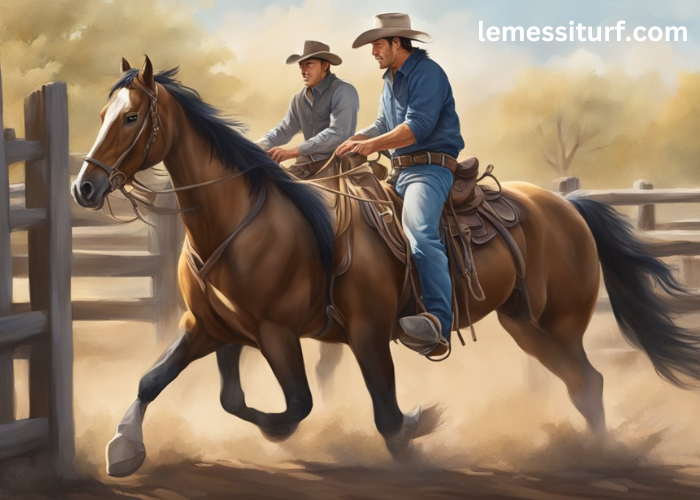Horses have been indispensable to human civilization for thousands of years, serving as companions, laborers, and symbols of grace and power. The world of horses is rich with diversity, care techniques, and training methods that reflect their multifaceted roles in human society. This article explores the breeds, care, and training of horses, offering a comprehensive guide to equine excellence. Explore a wide range of courses on casa design, architecture, and construction at our website. Enroll today to enhance your skills and knowledge.
Understanding Horse Breeds
Horses come in a wide variety of breeds, each with unique characteristics, strengths, and temperaments. Broadly, horse breeds can be categorized into three groups: light horses, heavy horses, and ponies.
Light Horses
Light horses, often known for their speed and agility, are typically used for riding, racing, and light work. Some popular breeds include:
- Arabian: Known for their endurance and distinctively arched necks, Arabians are one of the oldest and most recognizable horse breeds.
- Thoroughbred: Renowned for their speed and agility, Thoroughbreds are the breed of choice for horse racing.
- Quarter Horse: Famous for their muscular build and quick bursts of speed, Quarter Horses excel in sprinting short distances and are popular in rodeo and ranch work.
Heavy Horses
Heavy horses, or draft horses, are larger and stronger, bred primarily for heavy labor and agricultural work. Notable breeds include:
- Clydesdale: Recognizable by their large size and feathered legs, Clydesdales are gentle giants often used in parades and as carriage horses.
- Percheron: Known for their strength and versatility, Percherons can be seen in both agricultural work and equestrian competitions.
- Shire: The largest of the horse breeds, Shires are powerful and calm, historically used for pulling heavy loads.
Ponies
Ponies are smaller than horses, but they possess remarkable strength and endurance relative to their size. They are often used for children’s riding, driving, and light farm work. Popular pony breeds include:
- Shetland Pony: Small but strong, Shetland Ponies are excellent for children’s riding and light driving.
- Welsh Pony: Known for their intelligence and versatility, Welsh Ponies are used in a variety of equestrian disciplines.
- Fell Pony: Hardy and sure-footed, Fell Ponies are used for riding, driving, and farm work.
Essential Horse Care
Caring for a horse requires a deep understanding of their needs and a commitment to their well-being. Key aspects of horse care include nutrition, housing, grooming, and health maintenance.
Nutrition
A balanced diet is crucial for a horse’s health. Horses primarily eat forage, such as hay and grass, which should make up the bulk of their diet. Supplementing forage with grains and concentrates can provide additional nutrients, especially for working horses. Access to fresh, clean water is essential, as horses can drink up to 10 gallons of water a day.
Housing
Horses need a safe and comfortable living environment. This can range from a well-maintained stable to a spacious pasture. Key considerations include:
- Shelter: Protection from extreme weather conditions, whether it’s a stable or a simple run-in shed in the pasture.
- Space: Adequate space to move freely, graze, and exercise.
- Bedding: Clean, dry bedding such as straw, shavings, or specialized mats in stables.
Grooming
Regular grooming helps keep a horse’s coat healthy and can prevent skin problems. Grooming routines typically include:
- Brushing: Removes dirt, debris, and loose hair.
- Hoof Care: Cleaning and inspecting hooves daily to prevent issues such as thrush.
- Bathing: Occasional baths, especially after strenuous activities or during shedding season.
Health Maintenance
Regular veterinary care is vital for a horse’s health. This includes:
- Vaccinations: Protect against diseases such as influenza, tetanus, and West Nile virus.
- Deworming: Regular deworming to prevent parasitic infections.
- Dental Care: Routine dental check-ups and floating (filing down sharp edges) to maintain proper chewing and digestion.
- Hoof Care: Regular trimming by a farrier, typically every 6-8 weeks.
Training Horses
Training a horse requires patience, consistency, and an understanding of equine behavior. Effective training methods respect the horse’s natural instincts and build trust between the horse and handler.
Basic Training
Basic training, or groundwork, establishes fundamental skills and manners. Key components include:
- Leading: Teaching the horse to walk calmly beside the handler.
- Tying: Ensuring the horse stands quietly when tied.
- Lunging: Exercising the horse on a long line to develop obedience and fitness.
Riding Training
Once basic training is established, riding training can commence. This includes:
- Starting Under Saddle: Introducing the horse to carrying a rider, starting with simple commands and gradually increasing complexity.
- Advanced Riding Skills: Training for specific disciplines such as dressage, jumping, or western riding.
- Trail Riding: Preparing the horse for varied terrain and outdoor environments.
Specialized Training
Some horses receive specialized training for specific roles or competitions. Examples include:
- Racing Training: Focused on building speed, stamina, and race tactics for Thoroughbred and Quarter Horses.
- Dressage Training: Developing precision, control, and grace in a series of predefined movements.
- Show Jumping Training: Teaching the horse to navigate a course of jumps with agility and accuracy.
Conclusion
Understanding the diverse breeds, comprehensive care, and thoughtful training of horses is essential for anyone involved in the equine world. Horses, with their remarkable capabilities and deep bond with humans, continue to enrich our lives in countless ways. By embracing equine excellence, we honor these magnificent creatures and ensure their well-being and success in all their endeavors.
